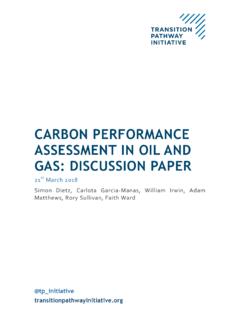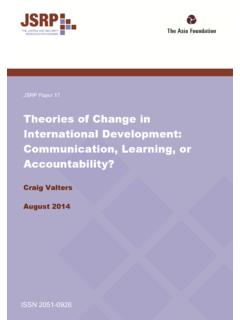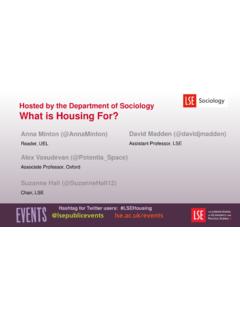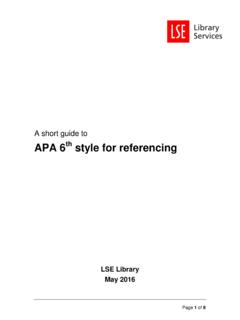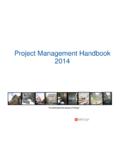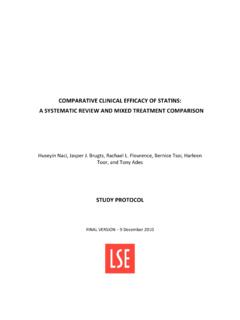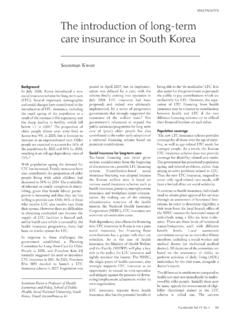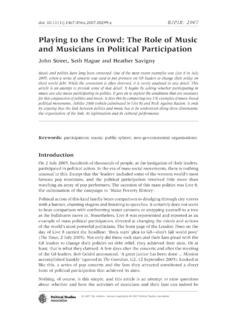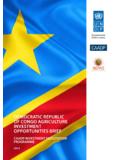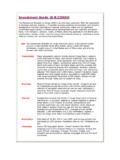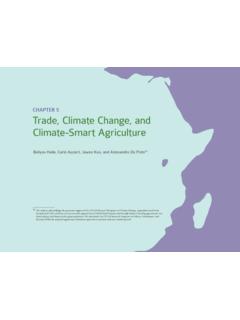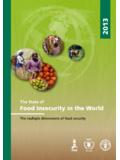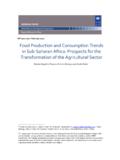Transcription of Democratic Republic of the Congo - LSE Home
1 CLIMATE CHANGE LEGISLATION IN Democratic Republic of the Congo AN EXCERPT FROM The 2015 Global Climate Legislation Study A Review of Climate Change Legislation in 99 Countries Michal Nachmany, Sam Fankhauser, Jana Davidov , Nick Kingsmill, Tucker Landesman, Hitomi Roppongi, Philip Schleifer, Joana Setzer, Amelia Sharman, C. Stolle Singleton, Jayaraj Sundaresan and Terry Townshend Climate Change Legislation Democratic Republic of Congo 2 Democratic Republic of Congo Legislative Process The DRC has a bicameral parliamentary system, where legislative power belongs to the National Assembly and the Senate. The 108 members of the Senate are elected by provincial assemblies (since 2007), while the 500 members of the National Assembly are elected from open lists using proportional representation (since 2006).
2 Members of both the Senate and the National Assembly are elected for five-year terms. Last National Assembly election was held in 2011 and the next is expected in 2016. The President is the head of state and appoints the members of the cabinet, while the Prime Minister is the head of the government. The Constitution, adopted in 2006 and modified in 2011, is the highest ranking norm. It establishes a strict separation between laws and regulations . Laws determinate general principles and rules in domains explicitly quoted in the Constitution, such as civil or economic rights, property rights, forest management, mining, protection of the environment and energy.
3 After a law is approved by both Houses, it is sent to the President, who must sign (promulgate) the law. The Constitutional Court might return a law considered unconstitutional to the Parliament to be modified and voted on again. On the other hand, regulations (decrees) establish rules outside of the law s domain determined by the Constitution or specify the implementation of the laws. Approach to Climate Change The Democratic Republic of Congo ratified the UNFCCC in 1995 and the Kyoto Protocol in 2005. DRC is a non-Annex I country under the Kyoto Protocol. In response to Agenda 21 of the United Nations Rio Conference in 1992 and with the help of the UNEP, DRC adopted its first National Environmental Action Plan in 1997, addressing the country s major issues related to poverty, population growth and environmental protection.
4 Serious food problems for the population reflect the limited area of agricultural land, and low intensity and productivity. The fundamental structure of the economy has changed little in the past 20 years, being highly dependent on agriculture and natural resource extraction. The UN expects the short to medium term development of the country to continue to be based around the extraction of natural resources, principally timber, minerals, gas and oil. The DRC s national development vision, as set out in its Poverty Reduction and Growth Strategy Papers, aims to increase growth in extractive industry to 8-9% between 2011 and 2015, facilitated by infrastructure investment to enable the country to draw down its natural capital.
5 Development has been impacted by the Second Congo War, which began in 1998 and involved numerous foreign armies and multiple militia groups, killing people. As a result, there has not been a particularly strong history of action on climate change legislation. Nonetheless, the country does have a National Adaptation Plan on Climate Change, and has engaged actively at the forefront of global REDD+ activities. It has also recently revised and implemented new environmental legislation that may be relevant to climate change. In 2001, the Minister of Environment, Nature Conservation and Tourism created the Directorate of Sustainable Development.
6 It aims to implement the recommendations and resolutions of the World Commission on Sustainable Development and the COP to the Conventions of Biodiversity, Climate Change and Desertification. The second update to the Growth and Poverty Reduction Strategy Paper (GPRSP2, 2011-2015) includes protection of the environment and fighting climate change as one of its four main strategic pillars, along with strengthening governance and peace; diversifying the economy, accelerating growth and promoting employment; and improving access to basic social services and strengthening human capital. The Environment Protection Law (2011) promotes mainstreaming of environmental and sustainable development issues into all policies, plans and Climate Change Legislation Democratic Republic of Congo 3 programmes across all relevant sectors, and includes an obligation to adopt and implement national measures for climate change mitigation and adaptation and disaster management.
7 However, DRC s ability to engage with the development process and implement laws over the medium term depends on being able to maintain a tenuous stability and provide economic development to one of the poorest populations in the world. Energy Supply Some 95% of energy needs are currently being met by biomass. However, the country has a potentially diverse energy mix from oil, gas, solar and hydro-electric. Estimates suggests that the DRC has the potential to supply 100GW of power from hydro-electric power generation, but less than 3% of it is currently exploited. Government policy (defined in GPRSP2) aims to meet national energy needs by developing electricity production, improving access to electricity, increasing electricity exports to the sub-region and developing renewable energy.
8 These goals are to be achieved by liberalising the electricity sector (production, transportation and distribution) and increased public and private investment. The Government intends to restructure the National Electricity Company (SNEL), set up a Regulatory Authority, rehabilitate hydroelectricity plants and existing transmission and distribution infrastructures and construct additional infrastructure. New hydroelectricity plants will be launched in Kakobola, Grand Katende and Zongo II, as well as the mega project of Inga III and Grand Inga dams, which would represent the world's largest hydropower scheme (expected 40GW power capacity).
9 A new Electricity Sector law was promulgated in June 2014, which aims to consolidate laws relating to electricity generation, transmission, distribution, trading and use, as well as promotion of competition in the sector and support of energy efficiency and environmentally policy. To increase access to energy in rural areas and secondary cities, a National Electrification Agency and a National Electrification Fund have been created. REDD+ and LULUCF DRC s forests are the second largest in the world by area, extending over more than 100 million ha. Due to the pressures of agriculture and resource extraction, DRC is amongst the top 10 countries in terms of loss of forest cover (measured on an annual basis), with an estimated deforestation of more than 350,000 ha per annum from 2000-2010.
10 Household-scale slash and burn agriculture and exploitation of wood for fuelwood (including charcoal) and timber appear to be the major drivers of deforestation and forest degradation, including in the eastern conflict zones, where four of the DRC s national parks are found. More than half of DRC's territory is now covered with mining and extractive concession licences, which overlap with one another and also with protected areas. This presents a large challenge to the rural poor who continue to be dependent on forest resources for their livelihoods. Also, less than a third of timber is processed in-country, meaning that significant value added for the tropical hardwoods is captured outside DRC.
